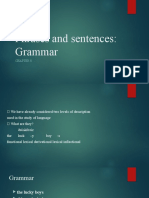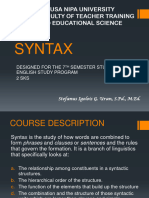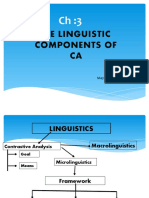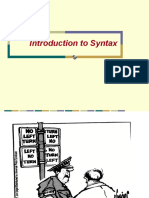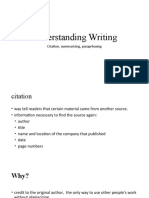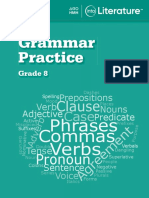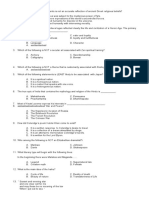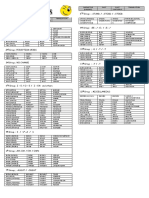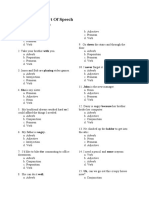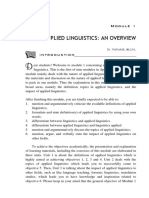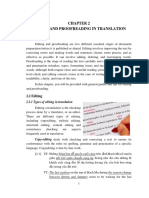0% found this document useful (0 votes)
15 views27 pagesLecture Notes Grammar - Intro To Linguistics
This document discusses the structure and analysis of English grammar, highlighting the distinction between traditional and descriptive approaches. It covers parts of speech, grammatical gender, syntactic rules, and generative grammar, emphasizing the importance of understanding language structure through various analytical methods. Additionally, it touches on language typology and the significance of word order in different languages.
Uploaded by
asmaassaneea32Copyright
© © All Rights Reserved
We take content rights seriously. If you suspect this is your content, claim it here.
Available Formats
Download as ODT, PDF, TXT or read online on Scribd
0% found this document useful (0 votes)
15 views27 pagesLecture Notes Grammar - Intro To Linguistics
This document discusses the structure and analysis of English grammar, highlighting the distinction between traditional and descriptive approaches. It covers parts of speech, grammatical gender, syntactic rules, and generative grammar, emphasizing the importance of understanding language structure through various analytical methods. Additionally, it touches on language typology and the significance of word order in different languages.
Uploaded by
asmaassaneea32Copyright
© © All Rights Reserved
We take content rights seriously. If you suspect this is your content, claim it here.
Available Formats
Download as ODT, PDF, TXT or read online on Scribd
/ 27





























